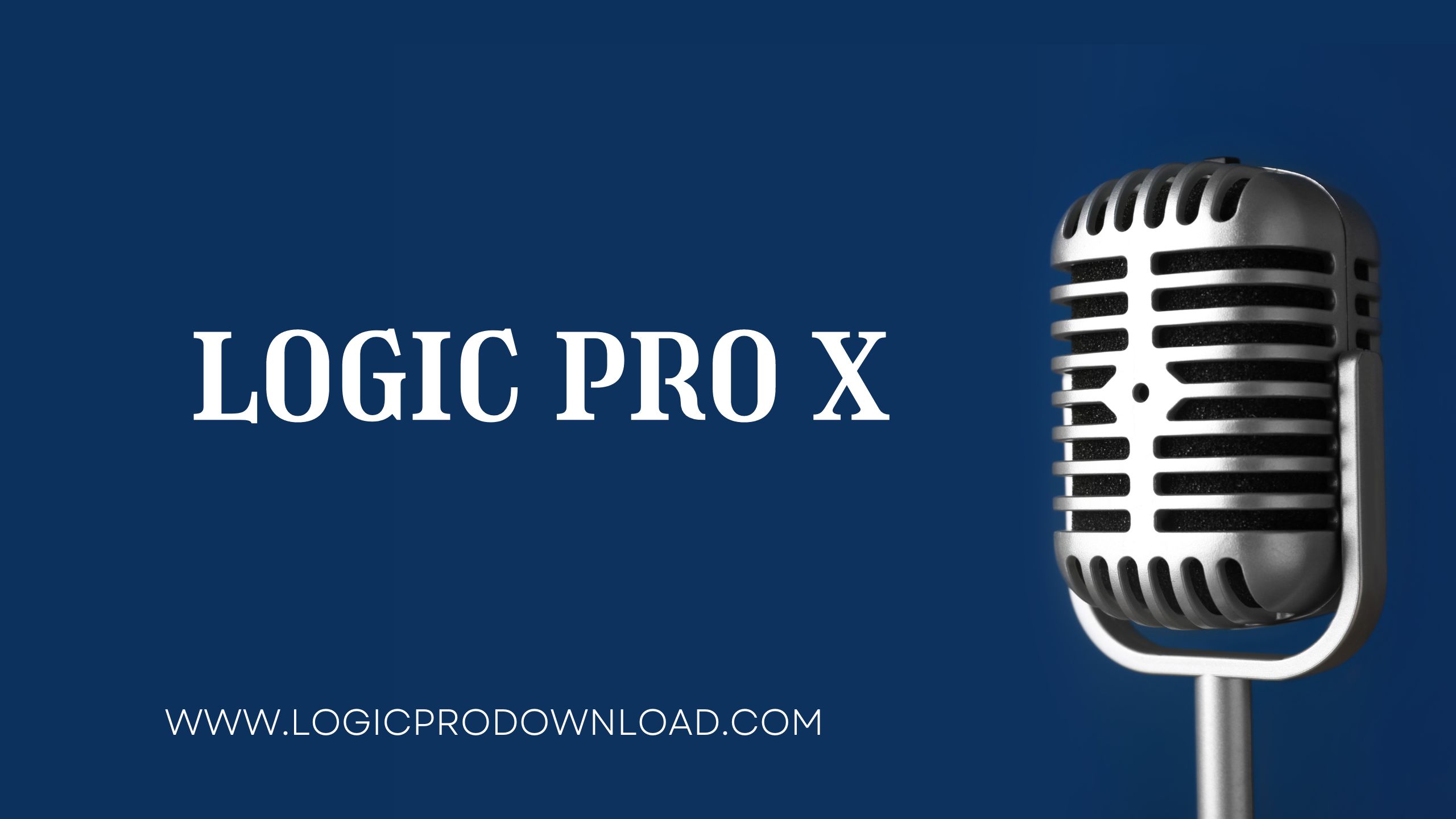TECH
Logic Pro X | Official Tool For All Music Lovers

Logic Pro X is a digital audio workstation with a MIDI sequencer, guitar plugin, and streamlined interface. In this article, we’ll go over some of its features and how it works. This software is designed for musicians and professional audio engineers but is still accessible to beginners.
Logic Pro X is a digital audio workstation.
Logic Pro X is a digital music workstation that allows you to record music. It has various effects and plug-ins to help create the perfect sound for your project. For example, you can create drum loops and record them in different tracks. It also supports MIDI recording and playback. This means you can record from your iPad or MIDI keyboard or playback the MIDI data using your computer keyboard.
You can use logic Pro X in a professional setting and for home recording. Big names and indie artists have used it to create incredible sounds. It is worth exploring the different options and working with them to develop your skills.

If you’re new to music production, Logic Pro X is a great program to try. It is a powerful digital audio workstation that lets you record live audio, edit and produce music, and share your creations with others. It has an intuitive interface that makes learning the program simple. It’s also equipped with helpful keyboard shortcuts to make it easier for you to work with the software.
Another new feature of Logic Pro X is the Sampler, a plug-in that provides a core workstation-style sample set. This plug-in is compatible with EXS24 libraries and provides a unified user interface for creating sampler instruments. It also has an editing interface that lets users map samples to different keys. It also has Flex Time, which helps users preserve sample length regardless of pitch.
Logic Pro X has a MIDI sequencer that can control audio hardware.
Apple significantly influences the music industry, and this software is no exception. It is an excellent recording studio tool and comes with a variety of powerful tools. In addition to MIDI sequencing, it is also very good at audio manipulation. Even though it is not accessible, Logic Pro X is still a good buy at $200. Many other DAWs cost several hundred dollars more.
The MIDI sequencer in Logic Pro X has several playback modes. The first mode starts at the top of the screen and plays a pattern. The second mode lets you play the sequence backward. If you want, you can even create a randomized line. You can also connect this MIDI sequencer to any AU instrument.
The Step Sequencer inspector is another tool that Logic users will be familiar with. There are several settings within this window that you can tweak, including the number of steps, rows, and pattern regions. The Step Sequencer inspector also lets you edit the pattern and individual actions.
The Logic Remote MIDI sequencer offers extensive transport and Logic Pro X plugin control. It has integrated locators, track selection, and an undo button. It also includes iOS support and can control all Logic Pro X transport functions.
If you are serious about getting the best possible guitar sound, Logic Pro X has a great guitar plugin to help you do that.
This plug-in lets you model a variety of guitar cabs and amp heads. It also enables you to adjust the position and type of microphone to get the best sound possible. Each amp head has unique settings, such as gain and basic equalization. Some also have reverb and tremolo effects.
The Logic Pro X guitar plugin also includes a preset menu to help you achieve a specific tone. The presets can get you about 80 percent of the way to the style you want, but if you wish to have more fidelity, you can adjust the settings of the guitar amps to make them sound just the way you want. You can also use a Pedalboard plug-in to tweak guitar and bass tones.
To record a guitar track in Logic Pro X:
- Choose the track you want to record.
- Click on the “Record” button in the control bar.
- Move the play head to a spot on the track where you want to record. This step will make your recording sound more natural and less artificial.
You can export the finished recording as an mp3 or save it to your computer.
If you don’t want to spend a lot of money, some guitar plugins are available for Logic Pro X. You should check out Amplitube 4, Guitar Rig 5, and BIAS FX 2.
It has a streamlined interface.
One of the best things about Logic Pro X is its new streamlined interface. Previously, tracks were stored in folders, but now they are organized into Track Stacks. This means you can select multiple track headers with just one click. You can also drag entire sections to rearrange them. The interface also has a Help button that explains the program’s features.
The new streamlined interface in Logic Pro X gives you a clear and straightforward view of the various tools available. You can easily access the transport controls and the Sound Library without hunting. There are also new features, such as the Flex Pitch tool for fixing out-of-tune vocals and changing the melodies of recorded audio. Another feature is Track Stacks, which allows you to collapse multiple tracks into one and create layered instruments. In addition, you can manipulate various plug-ins with just a single mouse move.
Logic’s score editor is a handy tool for classical and film composers. Unlike Ableton, Logic’s scoring tool focuses more on traditional productions, making it ideal for film composers and sound designers. It also features a track-integrated Channel EQ for easier post-production. The streamlined interface makes navigating the program’s menus easier and avoids searching through different EQ types.
If you’re in the early stages of learning to mix and master tracks, Logic Pro X may be right for you. Its intuitive, streamlined interface and 50 Gigs of content make it an excellent choice for both beginners and more experienced users. The new version of Logic also boasts a dedicated drum instrument.
It has a lot of stability improvements.
The latest update to Logic Pro X brings some improvements for users. The Pitch Correction window now appears when switching between sources, and the AHDSR envelope clearly shows the static and modulated parameters. Furthermore, the Mod Wheel on the Perform control now displays an orange arc around it, reflecting the current knob position. Additionally, there are now many fixes for common problems that have plagued previous versions of Logic Pro X.
Auto Set Locators now reliably sets location markers after changing region lengths. The shaded area beneath the Track Stack no longer lags when importing or exporting Music XML files. In addition, Logic Pro X no longer rejects files containing long audio driver names. The new version of Logic Pro X is also more stable and reliable with large Sysex dumps.
The Finder allows you to drag a Logic project to the All Files pane without selecting it first.
Logic Pro X will then display a prompt for saving the project. The new Crossfade tool also lets you create short crossfades at low zoom levels. It also provides better visual feedback when dragging regions into a folder.
Another significant improvement is the speed and responsiveness of the browser. Scrolling in Logic is now faster than before, even when switching windows. Additionally, scrolling is faster when navigating between the Mixer and Event list views. Further, Apple has optimized Logic for new Mac Pros with up to 56 threads. The latest version also handles downloads and updates better, making browsing the web faster.
If you’re using Logic Pro X, you’ve probably noticed that you’ve got some new tools for your bass amp.
The new Bass Amp Designer plug-in allows you to create bass amp rigs that boost bass signals and create mix-ready sounds. It’s an excellent tool for creating bass-centric mixes.
The Bass Amp Designer features four modeled devices and three movable virtual mics. It also has a tube preamp and eight DI modes. However, it lacks bass effects plug-ins, but you can use it in conjunction with Pedalboard, which has a variety of virtual stompboxes.
You can open the software instrument from the channel strip in Logic Pro X or the amplifier. You can record the output with a microphone or via an audio cable. You’ll need to hook your amplifier to your computer’s audio interface with an audio cable. If you don’t have an audio cable, you can also use a built-in microphone to listen to the output.
The new version of Logic Pro X includes a new interface and a slew of new features. The software also consists of a virtual drumming instrument with 15 drums sampled from the world’s top studios. This virtual drumming instrument comes with four styles and is quite helpful, but isn’t the only new feature in the latest version.

-

 MORE3 months ago
MORE3 months agoKatie Cherkasky: A Trailblazer in Military and Civil Rights Law
-

 BUSINESS3 months ago
BUSINESS3 months agoDecomm: Mastering The Final Stage of Tech Lifecycles
-

 MORE3 months ago
MORE3 months agoLeona Kimes: From Hillsong Pastor to Advocate for Change
-

 MORE3 months ago
MORE3 months agoGreg Kriek: South Africa’s Rising Star in Global Cinema